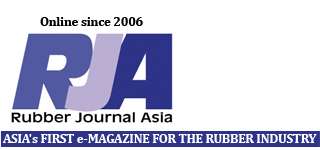US firm Styron opens its new SSBR (Solution Styrene Butadiene Rubber) production line in Schkopau, Germany. The new line, which has just started operating will add 50,000 metric tonnes capacity to supply tyre customers from all over the world.
The Vice President and General Manager for Emulsion Polymers, Marco Levi described the increase as a continuation of Styron’s aim to make a history in the rubber industry.
“SSBR is a valued and strategic business within Styron and is core to the company’s growth plans. Since the company’s formation, the rubber business has been the top recipient of new capital investment,” said Levi. “Styron is dedicated to partnering with its customers to design and develop rubber technology that will help them upgrade their line of tires to address global trends and regulatory standards. We are innovating for tomorrow, on a platform of 75 years of rubber expertise.”
The latest production train is built beside existing trains, which has started its initial construction following the budget allocated for it.
Francesca Reverberi, Styron’s Business Director for Rubber said that the company has built the new train to answer the increasing demand for tyres that are high performance.
“Motivated by sustainability goals, driven by economical advantages and pushed by legislation and regulations, automobile producers and tire producers need to develop products with long life, fuel savings and safe technology. Accordingly, there is a need for tyres with low rolling resistance combined with excellent wet grip and abrasion resistance in the tread,” explains Reverberi. “Using SSBR in the compounds is seen as a key enabling technology for delivering these three contradictory characteristics. Our people have the know-how to design the polymer but also to produce it on a big scale. Thanks to our R&D capabilities in Schkopau, the second generation SSBR technology reduces the rolling resistance indicator up to 35% versus Generation 1 SSBR. We have an ongoing commitment to continue innovating for our customers and are already developing the third and fourth generation.” (RJA)

